In the small town of Gunsan, on the west coast of Korea, is a former public bathhouse that has been transformed into a art gallery that is a sanctuary for the cultivation of Korean artists. The building itself has stood for approximately 50 years but in 2015, it underwent a metamorphosis that at once altered the significance of the structure forever while keeping intact the history within the space. Yidang Art House brings an atmosphere of art and heritage not only to the refurbished historic space but also adds a unique element of culture to the surrounding neighborhood.
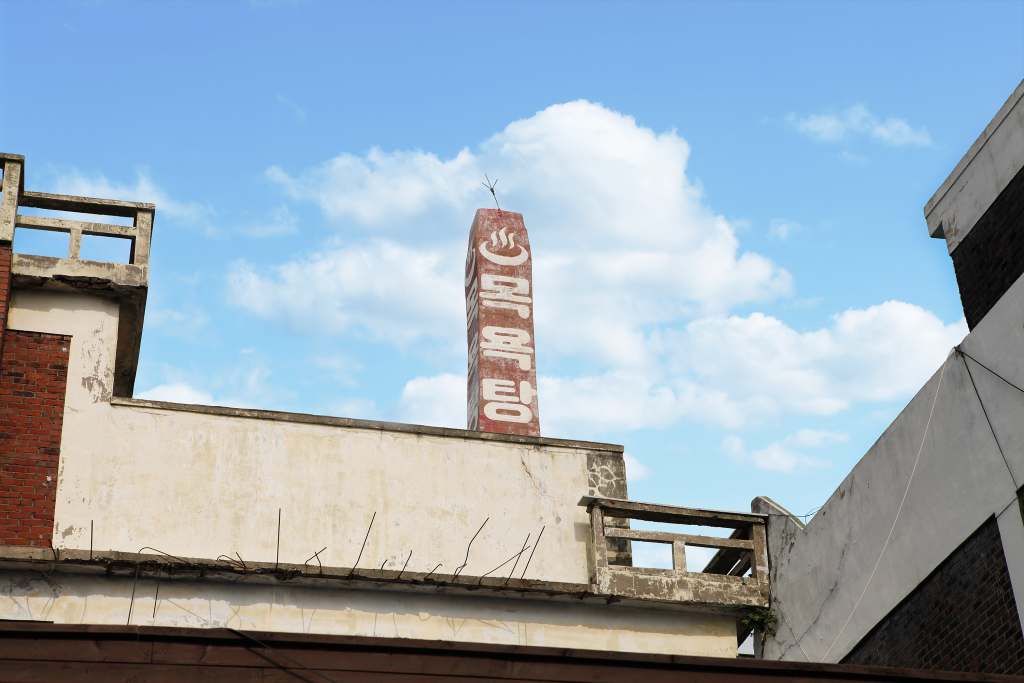
The chimney towering over Yidang Art House
I caught an early train to Gunsan and was making my through the backstreets of Gunsan to explore this historic building by midday. I wasn’t sure what to look for as I traversed the streets in search of the old bathhouse but was please to see a high chimney stack with the words ‘sauna’ printed on in large letters in the distance. I used the chimney as a guide and was soon standing in front of an old 4-story redbrick building in a quiet by-street. The structure is characteristic of buildings in the region at the time of its construction but it is the only one of its kind left on that street.
Washing Away the Past
The structure was built about 50 years ago and served as a public bathhouse and inn, which was once common thing to find throughout Korea. As the culture these large public bathhouse and inn facilities has diminished, there are several of these former bathhouses that have been transformed into galleries and art studios in Korea. The bathhouse in Gunsan closed its doors just over 10 years ago and stood as an abandoned relic for a decade. When renovations started, the baths and rooms of the sauna remained as they were originally and there were issues with managing the water and aged facilities. During the renovation of the building, project managers tried to retain as much of the original atmosphere as possible to create a unique and somewhat mysterious space where artists could exhibit their works. I could certainly feel a sense of the structures past when I entered the gallery.
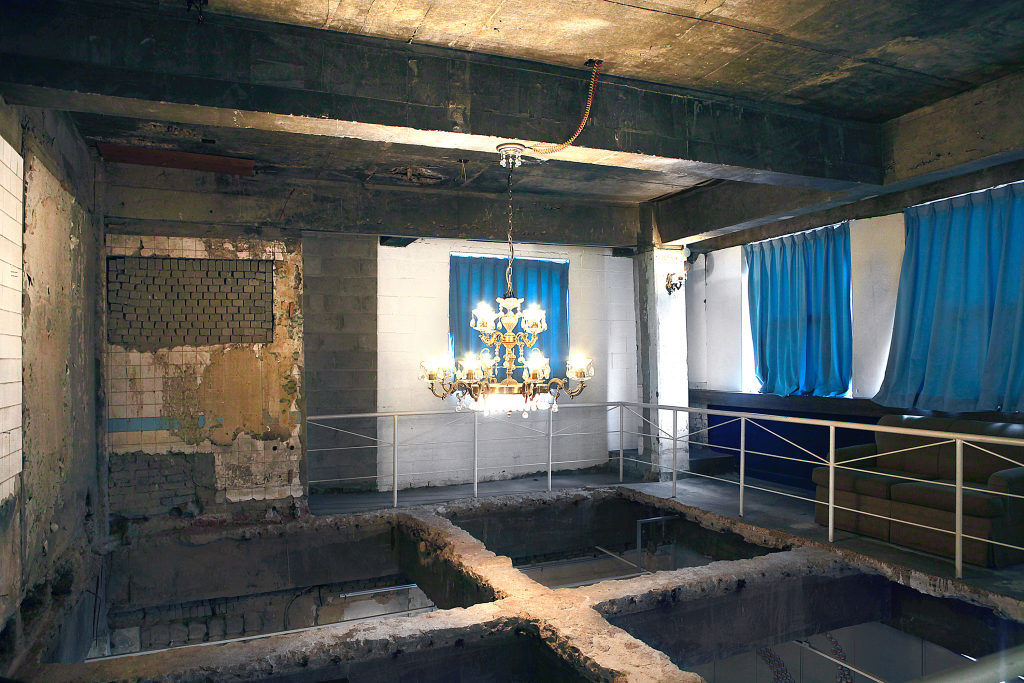
Crossbeams remaining at the entrance
As visitors enter the gallery to begin their tour, they are immediately met with the site of the remaining steel and concrete crossbeams that remain above the first floor. These beams work as a centerpiece and reference point to tie the building’s history into the experience of the space. There are also sections of tiles that remain from the bathhouse that lead visitors into the main exhibition area. The combination of modern clean lines and rustic textures creates an individual ambience in the art house. The exhibition space is an open floor with and clean yet rustic design. When I was visiting the gallery, they were hosting an exhibit featuring photographs of local people that contributed to the community in a large variety of ways.
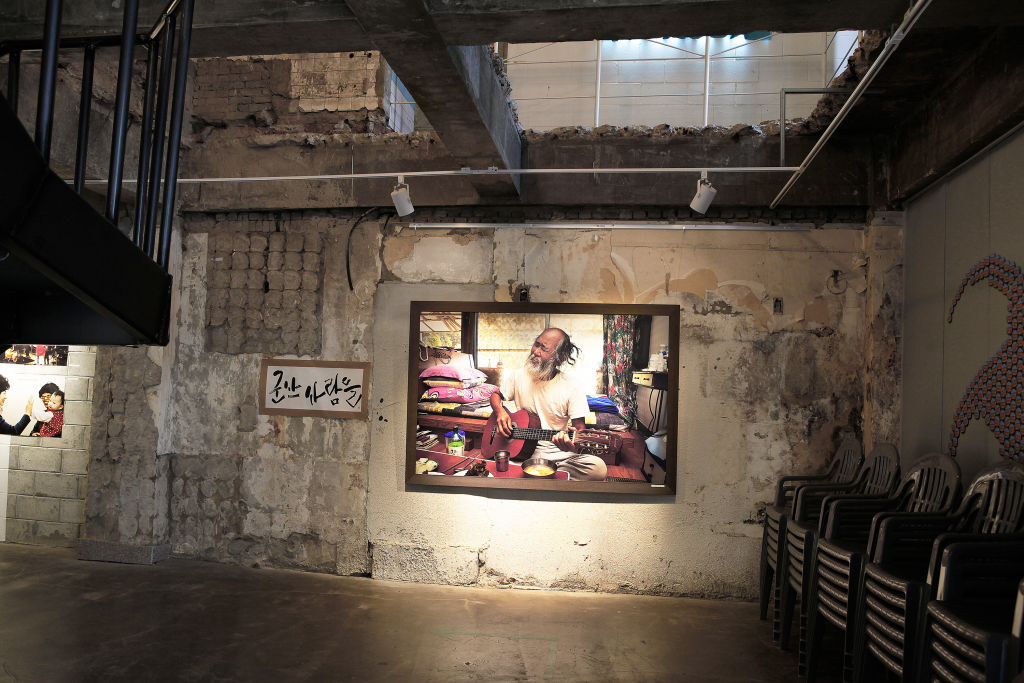
The beginning of the exhibition
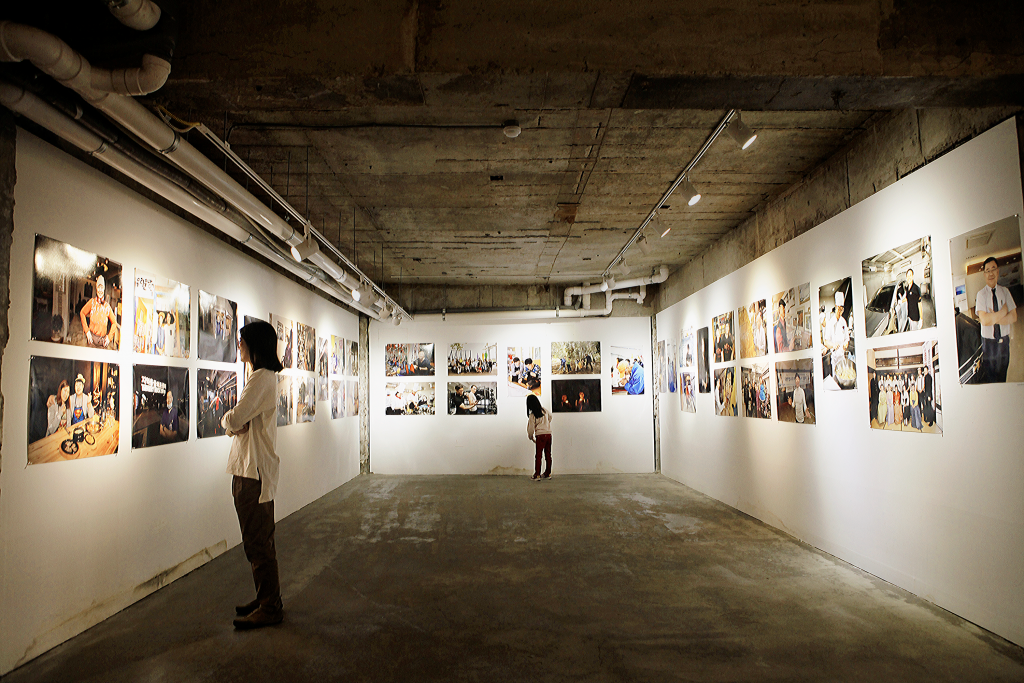
The clean and open exhibition hall
A Sanctuary of Art and Culture
The 2 upper floors of the art house host workspaces and residences for artists the create and live for short periods of time. This unique feature of the gallery was impressive as it not only displays art but also aims to develop a culture of creativity and provides artists with an opportunity to develop their art and capabilities. The workspaces and residences occupy what were once rooms where visitors to the bathhouse could stay. The practice of hosting an inn or sleeping quarters at a public bathhouse was once quite common in Korea and the gallery has made great use of the space available. Walking through the floors of Yidang Art House I observed that the historical integrity and rustic architecture of the structure have been preserved while the transformation of the place has giving new life to the building.
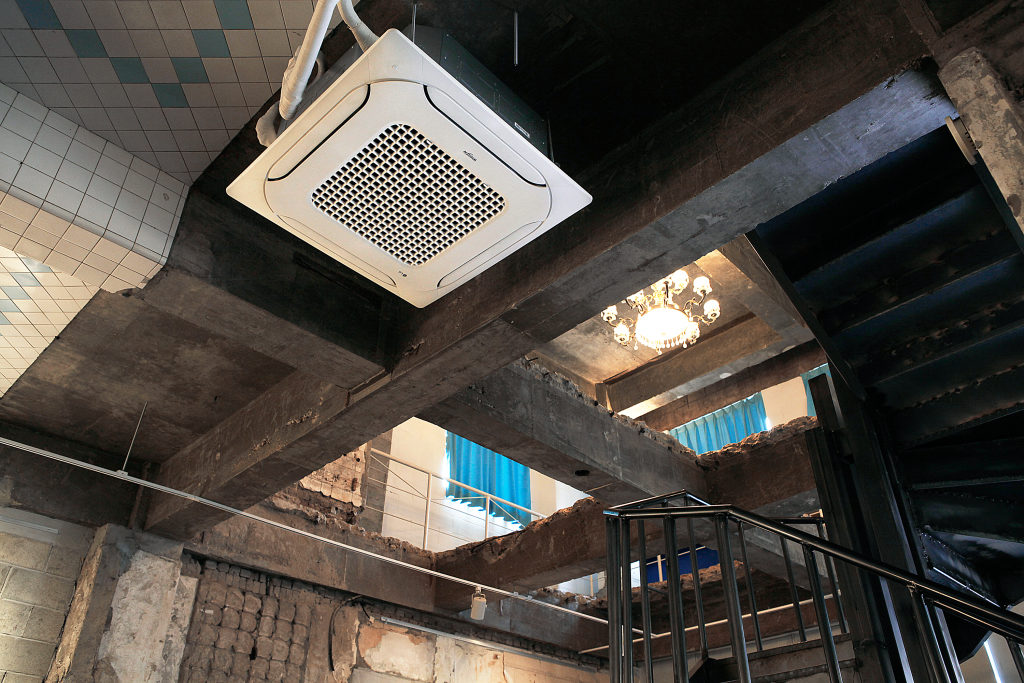
LG’s ceiling air conditioning unit blends naturally into the space.
LG Air Solutions also contributes to this space by providing a cool environment where visitors can enjoy exhibitions. The ceiling air conditioning unit blends naturally into the space and delivers a modern attribute to accompany the contemporary design built into the historic building. While the bathhouse underwent a dynamic transformation, the historical value of the structure itself was not compromised and I feel that the space is now an important cultural commodity in the neighborhood and in Korea. I hope to be able to revisit Gunsan soon and I will make sure to return to Yidang Art House to see what else is tucked into the neighboring streets.

Editor : Patrick Smith
He has resided in the US and Korea over the past 10 years working in such fields as radiology systems, fuel cell development and advertising. He brings his vast experience in Korean culture and business to help tell our story of heritage and culture. Patrick now works as a marketing director in Seoul.


































